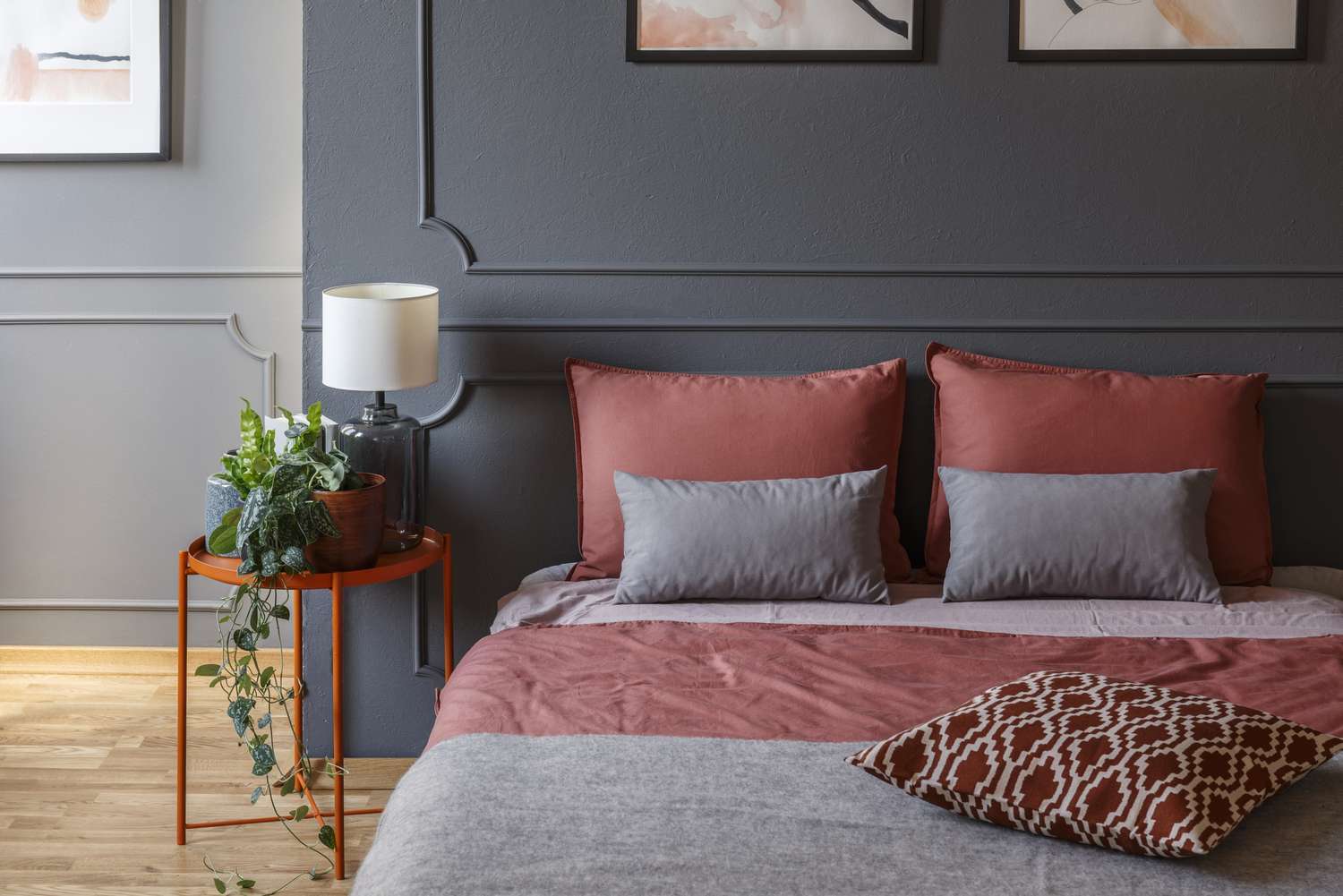A guest room should feel like a gentle exhale – comfortable and carefully decorated to make you feel at ease. Unfortunately, the wrong wall color can change the entire mood of the room. Certain hues make a room feel colder, smaller, or more tense, even if you have nice lighting and bedding.
So what colors should you avoid in a guest room? Experts say that some colors are completely off-putting – and while they look beautiful in theory, they don't look as elegant on all four walls.
Icy cool blue
Getty Images
Cool colors can be cheerful, but icy versions often have the opposite effect. “They tend to feel impersonal, almost like a hospital or an office,” says Jessie Brooks, color theory expert at Davincified. “Guests may subconsciously perceive these colors as aloof or emotionally distant.”
Stark gray or anthracite
Gray can be timeless and versatile, but the plain, steely versions aren't ideal for a guest room. Brooks groups these cooler tones with other clinical hues, pointing out that they can make a room feel emotionally distant. They also take away warmth and dimension, making the room feel poorly lit and underwhelming.
Charcoal tones present a similar challenge. Dark charcoal can be striking in the right setting, but in a guest bedroom it often overwhelms the space. “It can feel oppressive and unwelcome,” says Betina Hernandez, co-founder of VE+GA Studio. These shades absorb natural and artificial light, making the room feel “smaller, darker and less breathable,” she adds.
Neon colors
Saturated hues can be exciting in the right setting, but they rarely create the calming atmosphere you want in a guest room.
“Avoid bright reds, pinks, bright oranges, and neon greens,” says Brooks. “These are so stimulating that they seem overwhelming – they can increase alertness and even cause mild visual fatigue.”
Neon shades in particular tend to reflect harsh reflections in the room and keep the eye on its toes. Even in natural light, they read loudly and restlessly.
Red
Getty Images
Red is one of the most stimulating colors you can add to a wall, which is why the brightest, boldest versions will instantly overwhelm a guest room. While they can look lush and dramatic in dining rooms or library spaces, they are much more difficult to show off in a relaxing retreat.
Hernandez focuses in particular on deep wine red, explaining that while it's beautiful, it's “very dark and dramatic” and can make the room feel heavy. These moody reds absorb a lot of light and dominate the room, leaving little room for a softer, more restful atmosphere.
Yellow
Butter yellow may have a moment, but in a guest room it can look a little dated. As you move toward the sharper, more electric end of the spectrum, the effect becomes even trickier: “[Acid yellow] casts a harsh reflection on skin tones and can appear overwhelming rather than cheerful.”
In many cases, bright yellow tones also look like a child's room that has simply been repainted for guests. To make the room feel calm and grown-up, it's best to completely remove yellow from the color palette.
Muddy earth tones
Earthy colors can be beautiful when soft and balanced, but muddier tones quickly change the entire atmosphere of a guest room.
“These include certain browns, yellow-greens and mustards that can make a room look old or poorly lit,” says Brooks. “These shades absorb light in a way that creates strong shadows and gives the impression that the room is not clean or well-maintained, even if it is.”
Instead of warmth, these colors create a dull, shadowy glow that can leave the air feeling stale and the room in need of a refresh.
Ultra white
Getty Images
While white is often associated with cleanliness, bold, ultra-white hues can appear harsh. These shades are “too harsh and too light” and cast strong shadows, notes Hernandez.
Instead of feeling airy and open, a guest room painted ultra white can appear washed out and sterile, making the space feel more like a gallery than a cozy bedroom. The unrelenting brightness can also emphasize imperfections.
